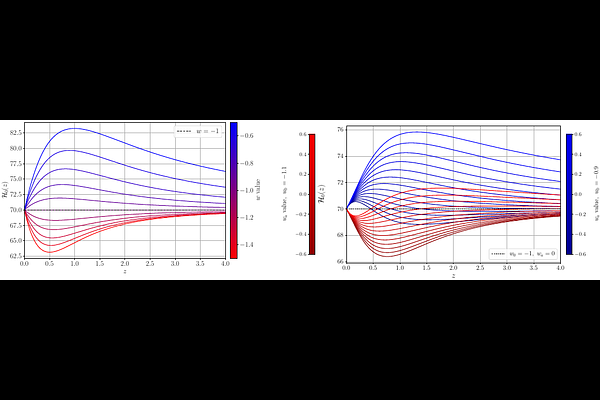The effective running Hubble constant in SNe Ia as a marker for the dark energy nature

The effective running Hubble constant in SNe Ia as a marker for the dark energy nature
E. Fazzari, M. G. Dainotti, G. Montani, A. Melchiorri
AbstractWe propose a new method that reveal the nature of dark energy (DE) evolution. Specifically, the method consists of studying the evolving trend regarding the effective running Hubble constant: when it increases, it indicates a quintessence nature, and when it decreases, it reveals a phantom behavior. Within the framework of the dark energy models we analyze three parameterizations: the $w$CDM model, a reduced Chevallier-Polarski-Linder (CPL) model and a new theoretical model based on the possible creation of dark energy by the time-varying gravitational field of the expanding Universe. For each DE model, we construct a theoretical effective running Hubble constant, i.e. a function of the redshift, which highlights the difference between modified dynamics and the $\Lambda$CDM-one. Furthermore, these dark energy models are compared to the phenomenological model of a decreasing trend of the Hubble constant as a function of the redshift, called the power-law model (PL) and the $\Lambda$CDM one. These three theoretical functions are fitted against the binned SNe Ia data samples, i.e. the Pantheon and the Master samples, the latter being a collection of SNe Ia from 4 catalogs: Dark Energy Survey (DES), PantheonPlus, Pantheon and Joint Lightcurve Analysis (JLA), without duplicated SNe Ia, called the Master sample. The main result of our study is that the phenomenological PL model is statistically favored compared to the other proposed scenarios, both for the Pantheon and the Master samples. At this stage, the SNe Ia data do not indicate that the evolution of dark energy models among the studied ones is favored respect to the $\Lambda$CDM. Nevertheless, the binned Pantheon sample allows for a discrimination of the nature of dark energy at least at the $1\,\sigma$ level via the fit of the effective running Hubble constant.